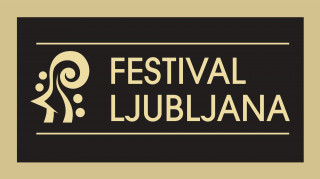Important information
Opening of the exhibition / Atrium entrance to the premises of the Ljubljana Festival: 20. 8. 2018, at 8.00 pm, Križanke
JANEZ LENASSI, sculptor
Sculptor Janez Lenassi (Opatija, 1927–Piran, 2008) burst onto the Slovene art scene in 1960 when his monument to Edvard Rusjan was unveiled in Nova Gorica. His use of reinforced concrete – a modern material typically used in architecture – was a bold choice for the field of commemorative sculpture. He also opted for an abstract design that sought to draw attention, by association, to the greatness of the man to whom the monument was dedicated. A year earlier Lenassi had attended a sculpture symposium in the Austrian town of Sankt Margarethen for the first time, an experience that had revealed to him the numerous advantages of sculpting outdoors alongside other sculptors from different environments, and emboldened him and fellow sculptor Jakob Savinšek to instigate similar encounters at home, an initiative that was given the name of Forma Viva. In 1962 Lenassi took part in the Forma Viva symposium in Portorož and created the monumental sculpture Sign (260 x 110 x 100 cm) in limestone, in this way leaving a powerful mark and setting out a vision for all subsequent editions. He had already experienced working with large blocks of stone (specifically sandstone) at the Austrian symposium. Following the Portorož experience, his affinity for the material grew even stronger. From then on he selected different types of stone both for large, monumental, public works and for small statuary, which constituted a parallel strand of his artistic production from the late 1950s until the end of his career: sandstone, limestone, marble, serpentine, granite, labradorite and others came to life under his hands in forms and volumes into which he breathed his intimate vision and feelings with extraordinary subtlety. He also admired and used other materials such as wood, clay, iron, steel and bronze, but after an initial period always returned to the original, elemental stone that he found in the quarries of Istria and the Karst region, which offered him the widest possibilities for dialogue in a manner that allowed him to express his great attachment to and love for nature, the Primorska region and its stone landscape. The selection of small statuary, which he created in limestone, granite and marble, reveals his most original works, which could be defined as abstract and which embrace his most important creative period, when with enormous subtlety he summoned forth the aestheticism of geometric forms with a hint of minimalism and at the same time with remarkable sensuousness and respect for the primary expressive qualities of the material. Lenassi saw and experienced stone through the prism of two principal views and feelings: the softness of undulating forms reminiscent of the waves of the sea, which he endowed with an organic bipolarity, and the purity of severe shapes based on geometric forms, with an emphasis on signs and symbols and linear application. But always with great respect for stone, which he worked by adapting to the trembling inner energy that allowed it to give birth to new, living forms. His small sculptures frequently tested the responsiveness of the stone he needed for his larger works, since once a sculptor reaches into the core of the stone, there is no going back. This obliged him, in his works of smaller dimensions, to cleave even more closely to his deep conviction that nature is the best sculptor. His approach to the stone mass was thus a combination of reflection and intuition, not drawing directly on nature but on his own rich inner life. This is the origin of his simple archetypal symbols: horizontal and vertical lines, spirals, triangles, rhombuses, crosses and so on. The origin of the ur-forms that he calls forth by polishing, almost caressing the stone, so that the outer shell, its skin, starts to quiver in softness and smoothness. There is also hapticity, which along with light and the harmony of volumes and masses, plays an important role in communicating the artistic content of his sculpture. As we mark the tenth anniversary of his death, we remember him as a prolific artist who left a deep mark both on public sculpture (Composition, 1982, Postojna; Fountain, 1990, Koper) and on commemorative sculpture (Monument to the Fallen, 1965, Ilirska Bistrica; Mariners’ Memorial/Fountain, 1977, Portorož), as a participant at numerous sculpture symposiums (Kirchheim, 1961, Germany; Krastal, 1967, Austria; Larvik, 1993, Norway), as the promoter of an international sculpture symposium in Slovenia (Portorož, 1991; Bled, 1996), as a tenacious researcher in the field of sculptural, and as a great connoisseur of the noble material that surrounded him in the environment in which he lived – stone. Small works in stone – including marble and granite – allowed him to express in an original and deeply felt manner his attitude towards the world and the formally well conceived solutions and multiple layers of meaning that he masterfully drew out from and impressed upon his evocative and at the same time monumental work. The exhibited works – Balance, 1973, granite; Family, 1977, marble; Sequence, marble, 1998 – and others that express his remarkable sensitivity to the expressive characteristics of the material in which he worked reveal to us merely a small part of his intimate, deeply felt spiritual dimension, offering us a glimpse into his extensive oeuvre, solidly inscribed in the treasury of Slovene and wider European culture, and an invitation to conserve an unfading memory of his work.
Dr. Nelida Nemec



